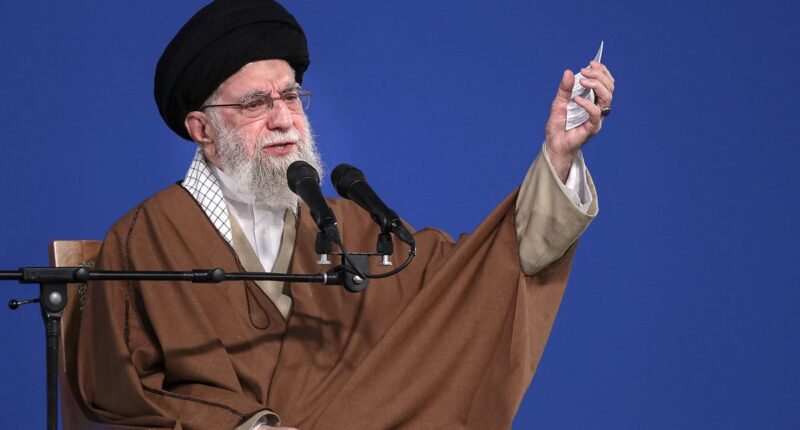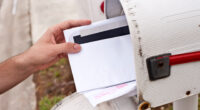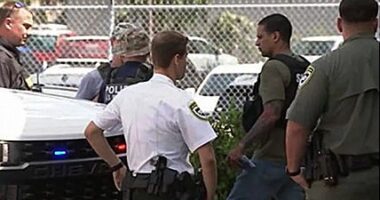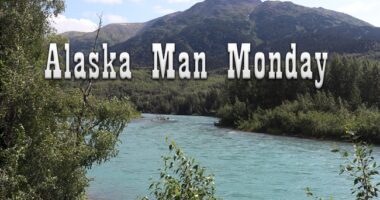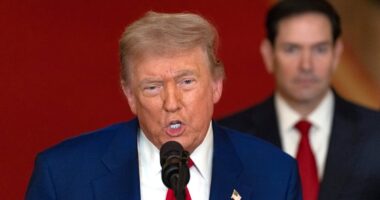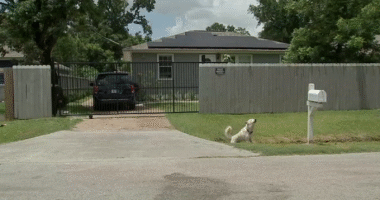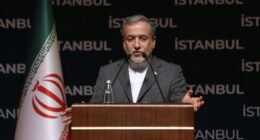High-ranking officials in the Trump administration have admitted their lack of knowledge regarding the whereabouts of Iran’s 880 pounds of uranium, which is close to weapons-grade, and seems to have been relocated prior to the US airstrike.
‘In the upcoming weeks, we will be taking steps to address the situation with that uranium, and this will be a topic of discussion with the Iranian leadership,’ stated Vice President JD Vance during an interview on ABC’s This Week program on Sunday.
According to reports from Iranian state media, Ayatollah Ali Khamenei, Iran’s Supreme Leader, declared that he had ordered the transfer of the country’s uranium supply to a concealed location in anticipation of a potential attack on three nuclear facilities by President Donald Trump.
And two Israeli officials told the New York Times that the Iranians, cognizant of Trump’s repeated threats of military action, removed the 880 pounds of uranium out of caution.
Maxar Technologies, a U.S. defense contractor headquartered in Colorado, released footage of 16 trucks leaving the Fordow nuclear site on Saturday night before the bombs fell. The trucks appeared to be transporting material out of the facility.
‘We should assume that Iran did everything they could to hide it in all kinds of secret places,’ former Israeli Prime Minister Naftali Bennett told Fox News. ‘Uranium is a very condensed material so you can hide it in caves, tunnels, et cetera.’

A satellite image shows new vehicle movements on the road 1.1 kilometres from the Fordow nuclear facility, near Qom, Iran
The missing uranium stockpile was enriched to 60% purity.
In order for uranium to be considered weapons’ grade, it must be at 90% purity. Power plants, in contrast, only need the radioactive metal to be enriched to 3%-5%.
Rafael Mariano Grossi, the director general of the International Atomic Energy Agency, told the New York Times his team of UN inspectors had seen the uranium about a week before Israel attacked Iran and that the stockpile was stored in special casks small enough to fit in the trunks of about 10 cars.
He added he believed the material had been moved.
But the missing material could now become a bargaining chip.
‘The President’s been very clear we can take additional action,’ Victoria Coates, Trump’s former Deputy National Security Advisor, told Bloomberg Markets.
‘If the Iranian regime were smart, that is something they could give up. They could say, ‘Okay, we are going to come to the negotiating table. You guys are going to stop bombing us, and we’re going to give up the enriched uranium as a gesture of good faith.’ So that would probably be the best path out of there. The worst path would be if they just cling to it grimly, and we have to take another action.’
And the Islamic Republic doubled down, vowing to continue its uranium enrichment plan despite Trump’s push for Iran to end its nuclear program.
Takht Ravanchi, Iran’s deputy foreign minister, told the Germany broadcaster ARD: ‘No one can tell us what we should and should not do.’
And Ali Shamkhani, a top political, military and nuclear adviser to Ayatollah Ali Khamenei, wrote on X: ‘Even if the nuclear sites are destroyed, the game isn’t over. Enriched materials, indigenous knowledge, political will remain.’
Trump, meanwhile, declared that Iran’s nuclear program had been ‘completely and totally obliterated’ in Operation Midnight Hammer.
‘Monumental Damage was done to all Nuclear sites in Iran,’ he wrote in a Truth Social post. ‘The biggest damage took place far below ground level. Bullseye!!!’

President Donald Trump claimed Iran’s nuclear program had been ‘completely and totally obliterated’

Ayatollah Ali Khamenei is believed to have moved 880 pounds of uranium before the attack
In the top-secret military operation, seven B-2 bombers flew for 18 hours from the United States into Iran to drop 14 bunker-buster bombs on the Fordow, Natanz and Isfahan nuclear facilities.
The bombers dropped 75 precision-guided munitions, including bunker-buster bombs and more than two dozen Tomahawk missiles.
Iran built the Fordow uranium enrichment plant under a mountain. Satellite footage in the wake of the attacked showed several holes deep in the rock.
But experts analyzing the images from the attack say Iran’s nuclear enterprise is far from destroyed.
‘At the end of the day there are some really important things that haven’t been hit,’ says Jeffrey Lewis, a professor at the Middlebury Institute of International Studies at Monterey, who tracks Iran’s nuclear facilities, told NPR. ‘If this ends here, it’s a really incomplete strike.’
And, while the uranium itself may have been saved, the equipment that purifies it may have fallen victim to American bombs.
At Fordow, the giant centrifuges that spin at supersonic speeds to purify the material are piped together and bolted to the cement floor.
Whether or not they survived the attacks remains a question mark. And, if they were destroyed, it’s unclear how long it would take Iran to rebuild them.
The centrifuges are necessary to increase the uranium to a weapons’ grade level.
David Albright, the president of the Institute for Science and International Security, said he thinks the purpose of the dozen 30,000-pound Massive Ordnance Penetrators – one of the largest conventional bombs in the U.S. arsenal – was to take out Iran’s nuclear infrastructure.
‘I think the purpose of the attack was to take out centrifuges and infrastructure and they feel they accomplished that,’ he told NPR.
